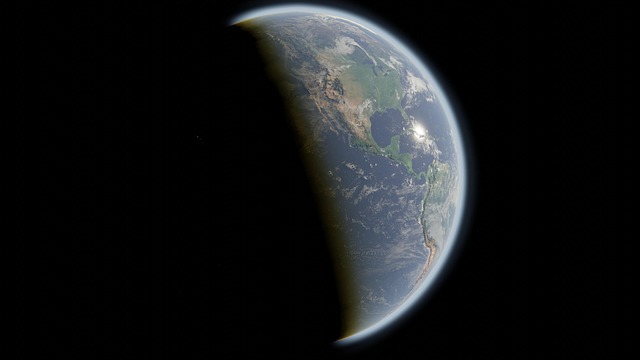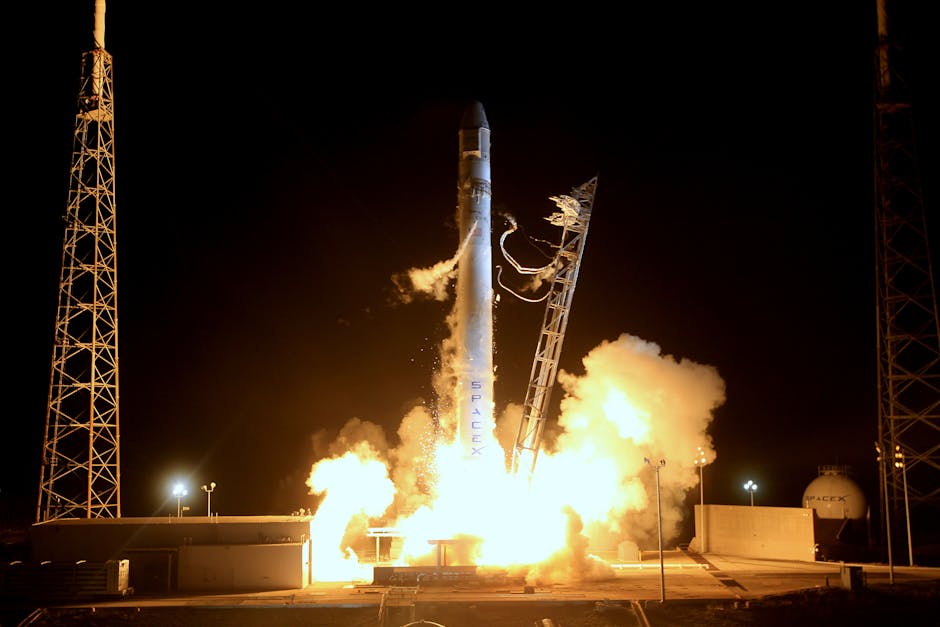Alright, let’s talk about something fascinating: the Meteorite from lost planet. You see, news stories often grab our attention, but some stick with you, making you ponder the big questions. This is precisely the case with a recent discovery – a celestial wanderer, a fragment of cosmic debris, that’s offering us a glimpse into the early solar system. This Meteorite from lost planet, known as NWA 15915, has scientists buzzing and sparking imaginations about the universe’s mysteries. Therefore, we should look deeper into the implications of this finding, considering what it means for our understanding of the cosmos.
Table of Contents
The Meteorite from lost planet provides a unique opportunity to study the composition and evolution of early protoplanets. This meteorite, found in the Algerian desert, is an achondrite, suggesting it originated from a differentiated celestial body. Analysis reveals a complex magmatic history, possibly linking it to a protoplanet destroyed long ago. The discovery of this Meteorite from lost planet offers insights into the processes that shaped the solar system. It may represent a fragment of a lost world, helping us understand the origins of our own planet.
We also Published
The chronicles of our time, as they are etched in the annals of newspapers and digital platforms, invariably encompass a vast spectrum of human endeavor. From the machinations of global politics to the ephemeral allure of celebrity culture, from the intricacies of personal finance to the triumphs and tribulations of athletic competition, the tapestry of news is woven with threads of every conceivable hue. Yet, amidst this cacophony of information, certain stories possess a peculiar resonance, a quality that transcends the immediate and speaks to the fundamental questions of our existence. One such narrative, recently brought to light, concerns a celestial wanderer, a fragment of cosmic debris that has landed upon our terrestrial sphere, offering a tantalizing glimpse into the primordial history of our solar system. This object, a meteorite designated NWA 15915, has captivated the attention of the scientific community and ignited the imaginations of those who ponder the mysteries of the universe.
The very nature of news, however, demands a constant vigilance against the ephemeral. The headlines of today are often relegated to the forgotten archives of tomorrow. Therefore, it is incumbent upon us to delve deeper, to examine the significance of this discovery within the broader context of scientific inquiry and philosophical contemplation. We must not merely report the facts, but strive to understand their implications, to appreciate the profound questions that they raise, and to consider the potential ramifications for our understanding of the cosmos. The meteorite, a silent messenger from the depths of space, holds within its crystalline structure the secrets of a bygone era, a time when the solar system was a tumultuous realm of colliding protoplanets and nascent worlds. To unravel these secrets is to embark on a journey of discovery, a quest to understand our origins and our place within the grand cosmic drama.
The Celestial Intruder: Deciphering the Origins of the NWA 15915 Meteorite
The narrative of the NWA 15915 meteorite begins, as many scientific endeavors do, with a serendipitous discovery. In the vast and unforgiving expanse of the Algerian desert, a fragment of extraterrestrial origin was unearthed in the year 2023. This seemingly unremarkable rock, however, proved to be anything but ordinary. Its classification as a coarse-grained achondrite immediately set it apart from the more common chondrites, meteorites that contain chondrules, small, spherical inclusions of silicate minerals. Achondrites, on the other hand, are igneous rocks, formed from the cooling and solidification of molten material. This fundamental difference in composition and structure suggests that the NWA 15915 meteorite originated from a differentiated celestial body, one that had undergone significant geological processes, such as melting and crystallization.
The subsequent analysis of the meteorite, conducted with the aid of sophisticated scientific instruments, revealed a composition and texture that defied easy categorization. Electron microscopes and spectroscopic instruments were employed to probe the intricate details of the meteorite’s mineralogy. The findings were presented at a recent scientific conference, where they sparked considerable interest and debate. The data indicated a unique magmatic history, suggesting that the parent body of the meteorite had experienced a complex sequence of melting, crystallization, and differentiation. The presence of specific minerals, along with the slow cooling rate inferred from the size and arrangement of the crystals, pointed towards an environment of formation similar to that of Mercury, the innermost planet of our solar system. However, the isotopic ratios and other subtle characteristics of the meteorite ruled out a direct connection to Mercury itself, leading scientists to propose a more intriguing hypothesis: that NWA 15915 originated from a protoplanet, a celestial body that existed in the early solar system but was subsequently destroyed.
Echoes of Lost Worlds: Unraveling the Protoplanetary Puzzle and the Meteorite’s Tale
The concept of protoplanets is central to our current understanding of planetary formation. In the nascent solar system, the sun was surrounded by a swirling disk of gas and dust, the remnants of the molecular cloud from which it was born. Within this protoplanetary disk, gravity caused the dust particles to collide and coalesce, gradually forming larger and larger bodies. These bodies, known as planetesimals, continued to grow through accretion, eventually reaching sizes comparable to the moon or even Mars. At this stage, they are classified as protoplanets. The protoplanets then engaged in a period of intense gravitational interactions, colliding and merging with each other to form the planets we know today. However, not all protoplanets survived this chaotic process. Some were disrupted by gravitational forces, while others may have been consumed by larger bodies.
The NWA 15915 meteorite, therefore, may represent a fragment of one such lost world. The evidence suggests that its parent body was large enough to undergo internal differentiation, meaning that it had a molten core, a mantle, and a crust. This implies that the protoplanet had a significant amount of internal heat, likely generated by the decay of radioactive elements and the energy released during the planet’s formation. The slow cooling rate of the crystals within the meteorite further supports this theory, as it indicates that the parent body was large enough to retain heat for an extended period. The discovery of NWA 15915 offers a unique opportunity to study the composition and evolution of these early protoplanets, which played a crucial role in shaping the solar system. By analyzing the meteorite’s mineralogy, isotopic ratios, and other characteristics, scientists can gain valuable insights into the processes that governed the formation and destruction of these celestial bodies, and ultimately, understand the origins of our own planet.
The Significance of the Find: Implications for Planetary Science and the Future of Space Exploration
The implications of the NWA 15915 meteorite discovery extend far beyond the realm of academic curiosity. This find has the potential to revolutionize our understanding of planetary science and to inform future space exploration missions. By studying the meteorite, scientists can test and refine existing models of planetary formation, gaining a more accurate picture of the processes that shaped the solar system. The data obtained from the meteorite can be compared to the data collected from other meteorites, asteroids, and planets, providing a comprehensive view of the diversity of celestial bodies and their evolutionary histories. Furthermore, the study of the NWA 15915 meteorite can provide insights into the conditions that are necessary for the formation of habitable planets. The composition and structure of the meteorite may reveal information about the presence of water, organic molecules, and other ingredients that are essential for life. This knowledge can be used to guide the search for extraterrestrial life and to identify potentially habitable exoplanets.
The discovery of NWA 15915 also highlights the importance of space exploration and the need for continued investment in scientific research. The meteorite was found in a remote location, far from the established centers of scientific activity. This underscores the fact that valuable scientific discoveries can be made in unexpected places, and that it is essential to support exploration and research in all areas of the world. Moreover, the study of meteorites requires the use of advanced scientific instruments and techniques, such as electron microscopes, spectroscopic instruments, and mass spectrometers. These instruments are often expensive to build and maintain, but they are essential for making progress in planetary science and other fields. By investing in scientific research, we not only expand our knowledge of the universe but also stimulate technological innovation and create new opportunities for economic growth. The NWA 15915 meteorite serves as a reminder of the vastness of the universe and the importance of exploring its mysteries.
We also Published
RESOURCES
- Meteorite diamonds ‘came from lost planet’
- Weird meteorite may be relic of lost planet that no longer exists …
- Diamonds Found in a Meteorite Once Belonged to a Protoplanet in …
- Diamond-studded meteorites came from the collision of a lost planet …
- tiny diamonds in meteorite “signature of a long-lost planet”: why …
- Diamonds In Meteorite May Come From ‘Lost’ Planet | NOVA | PBS
- Diamonds in Meteorite May Come from a Lost Planet | Scientific …
- This meteorite’s diamonds hint that it was born in a lost planet
- Strange Meteorite Could Be a Remnant of a Long-Lost Planet
- Diamonds in Sudan meteorite ‘are remnants of lost planet’ | Science …






0 Comments